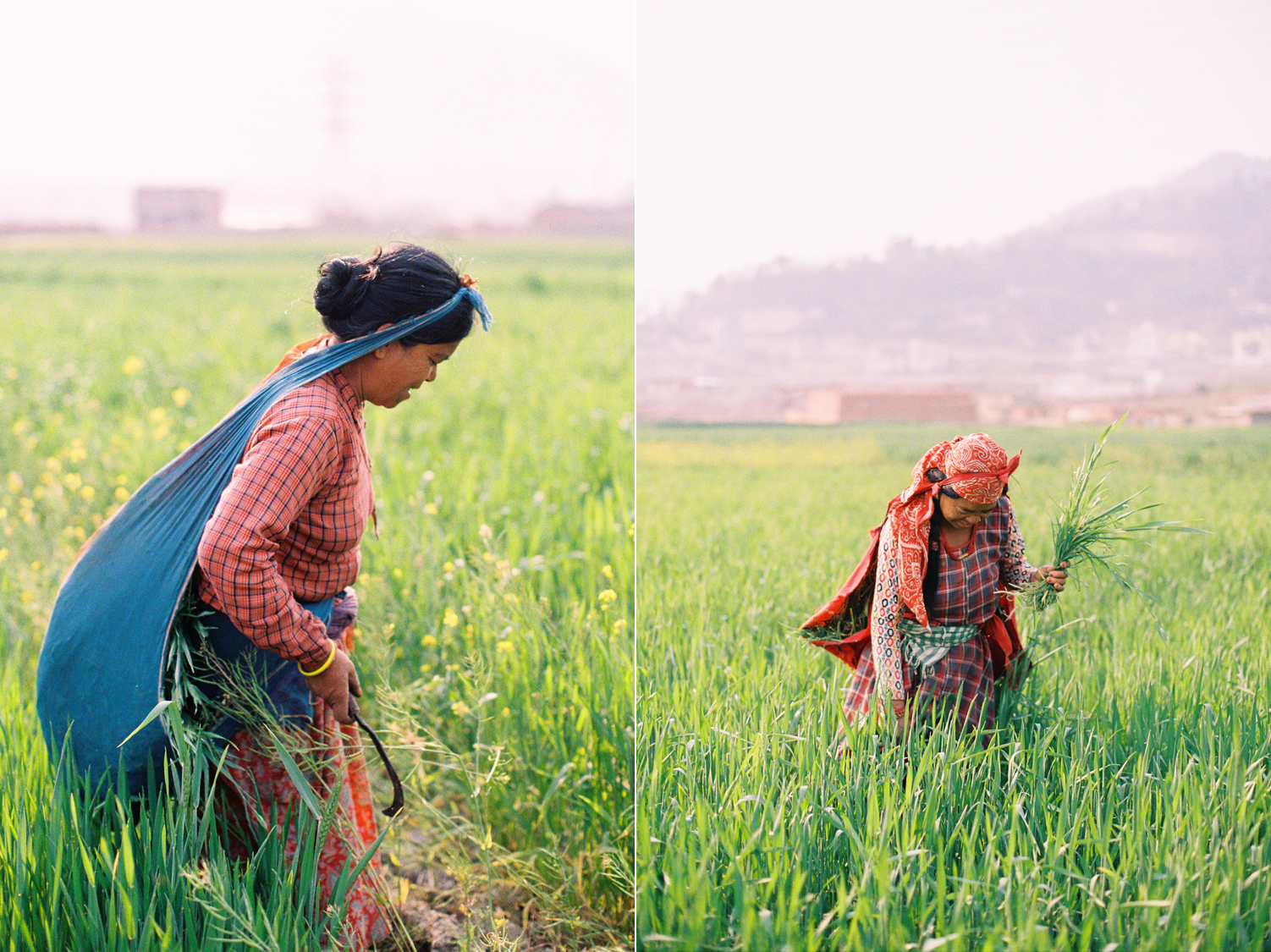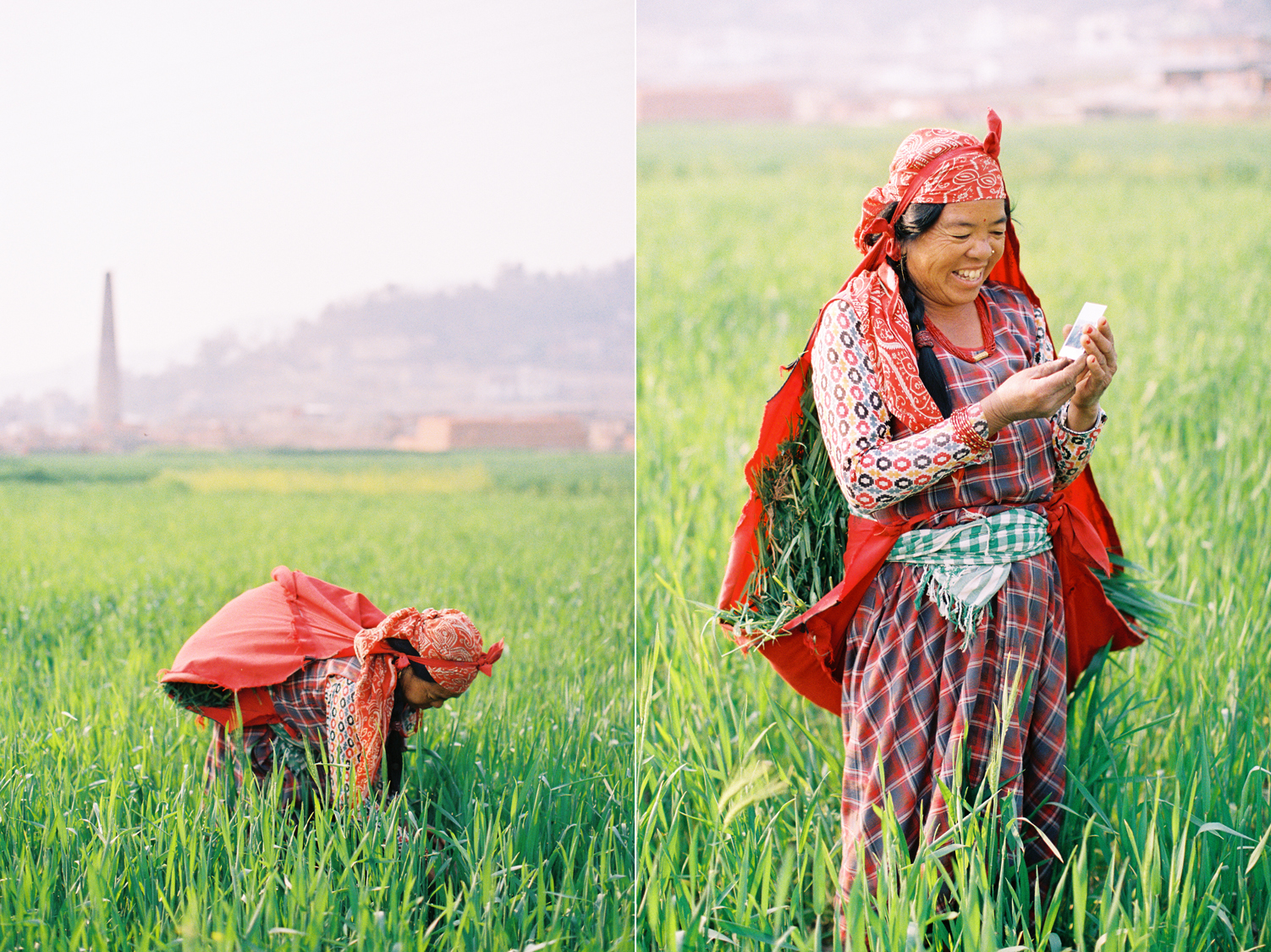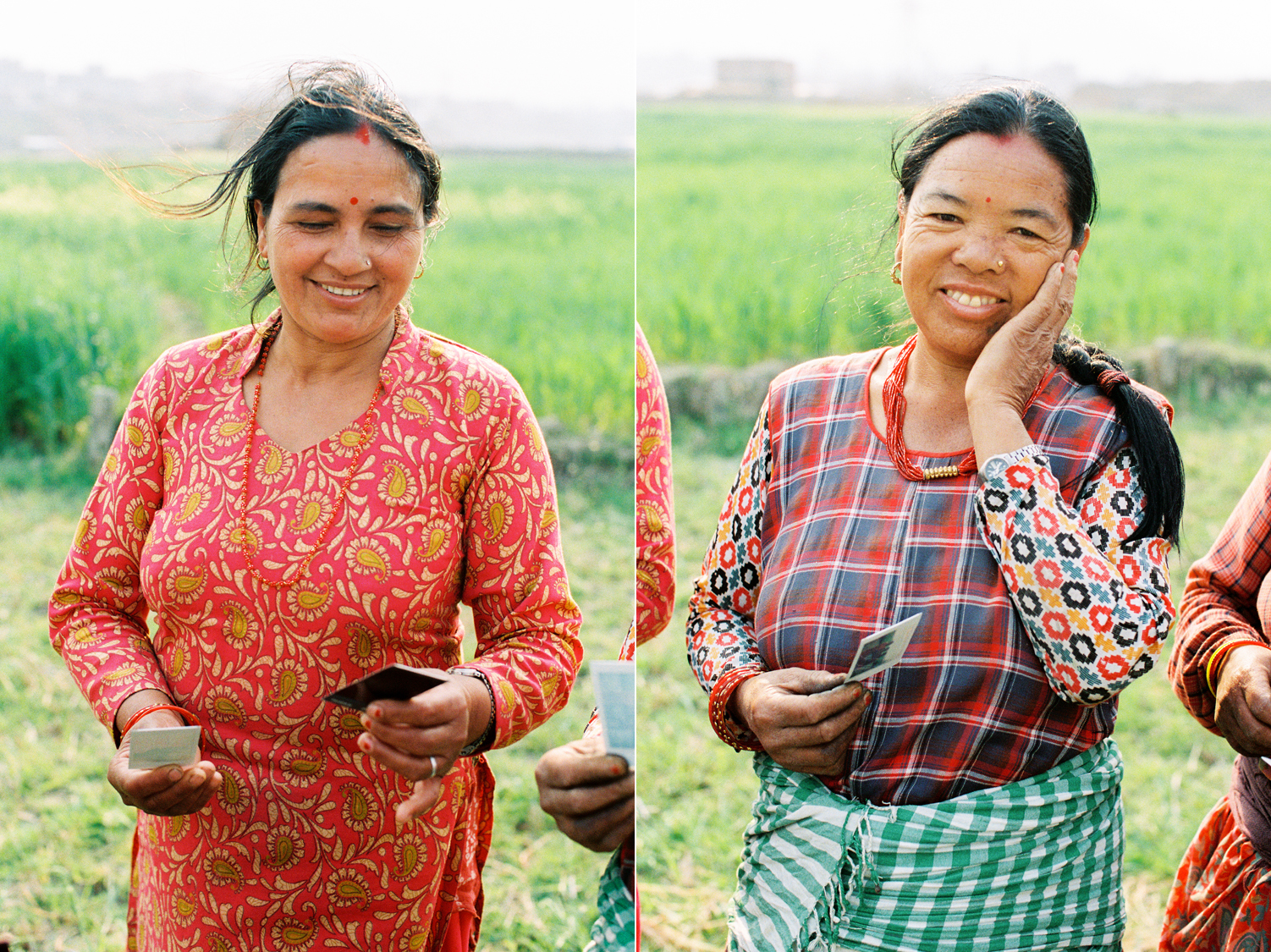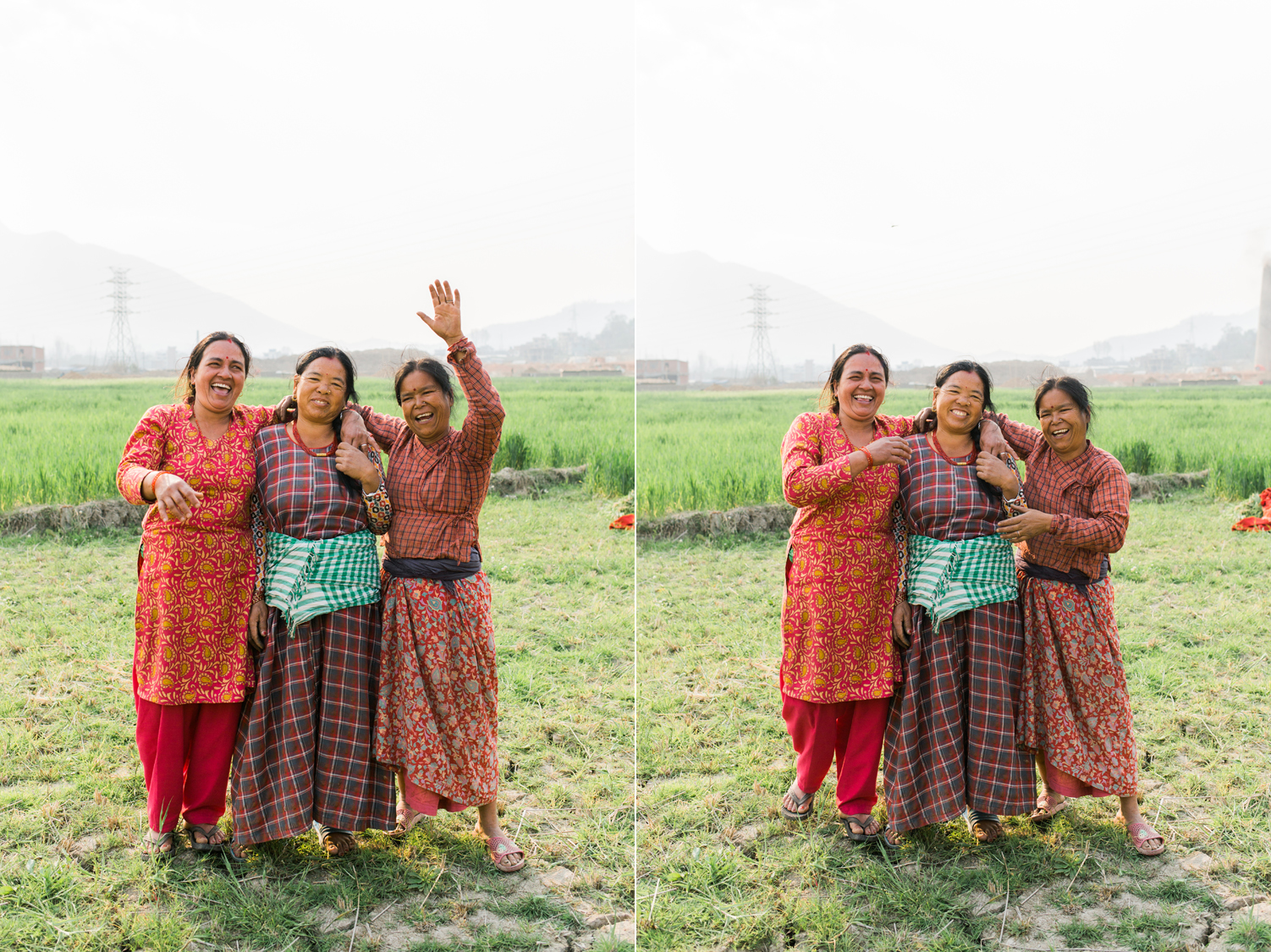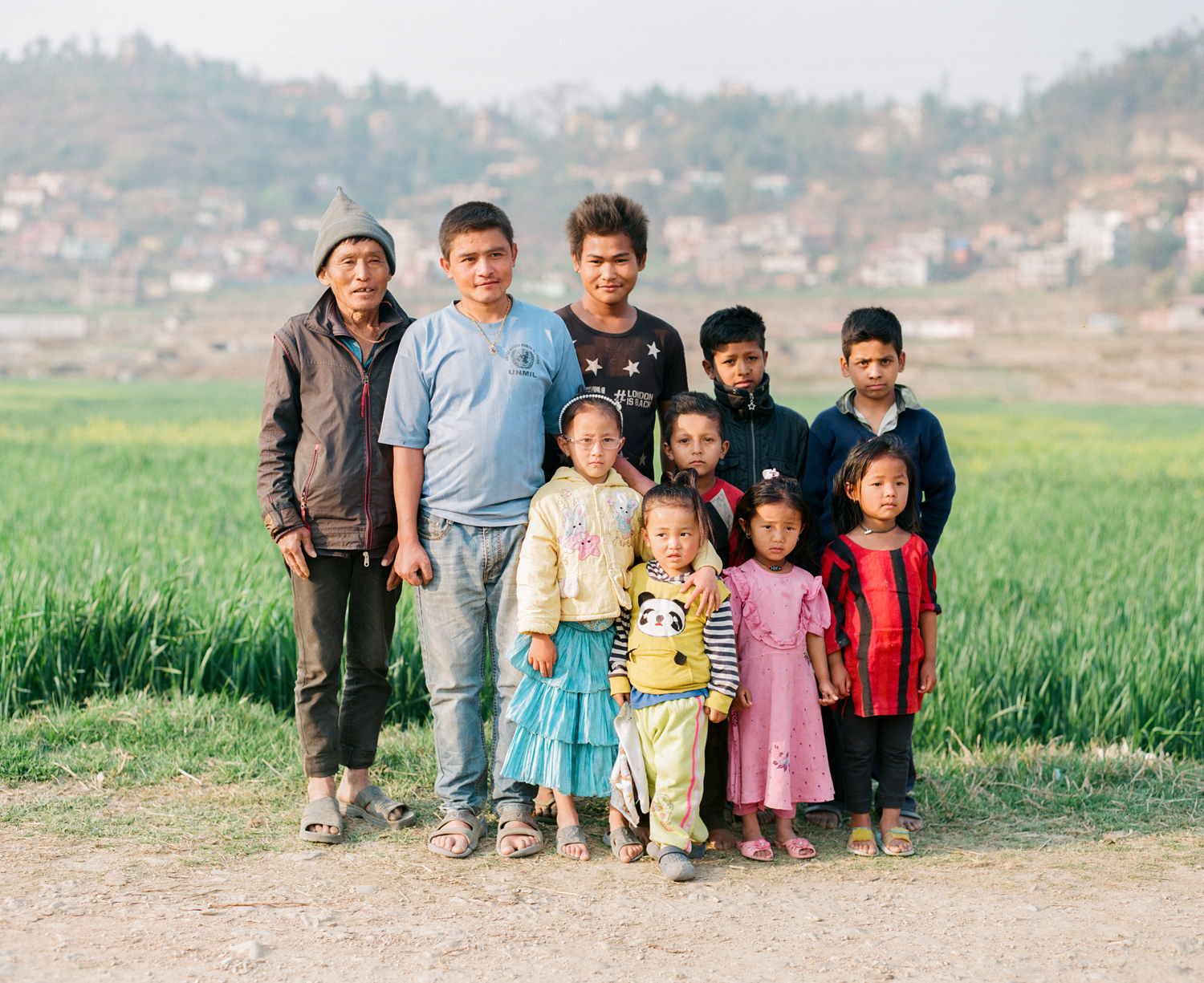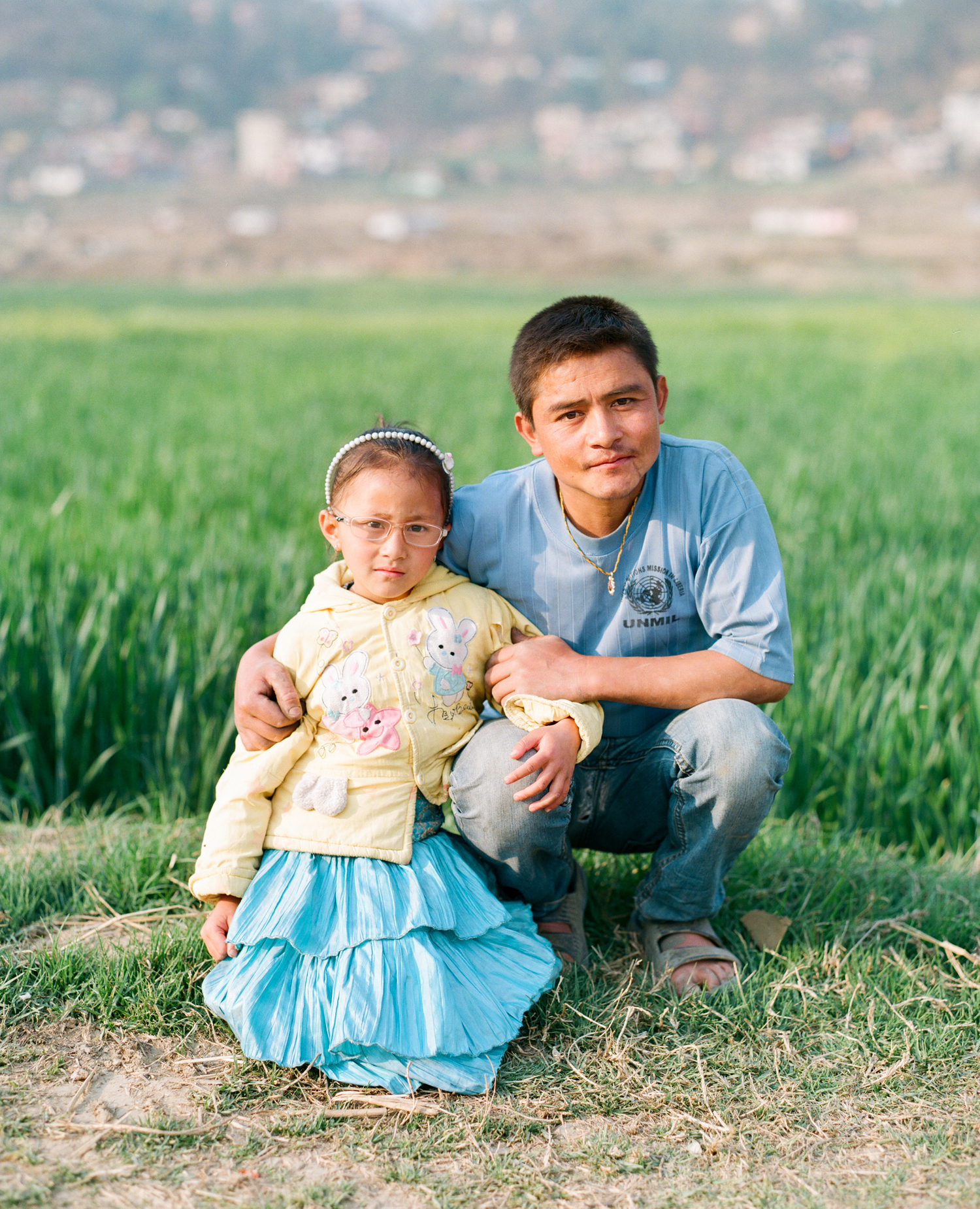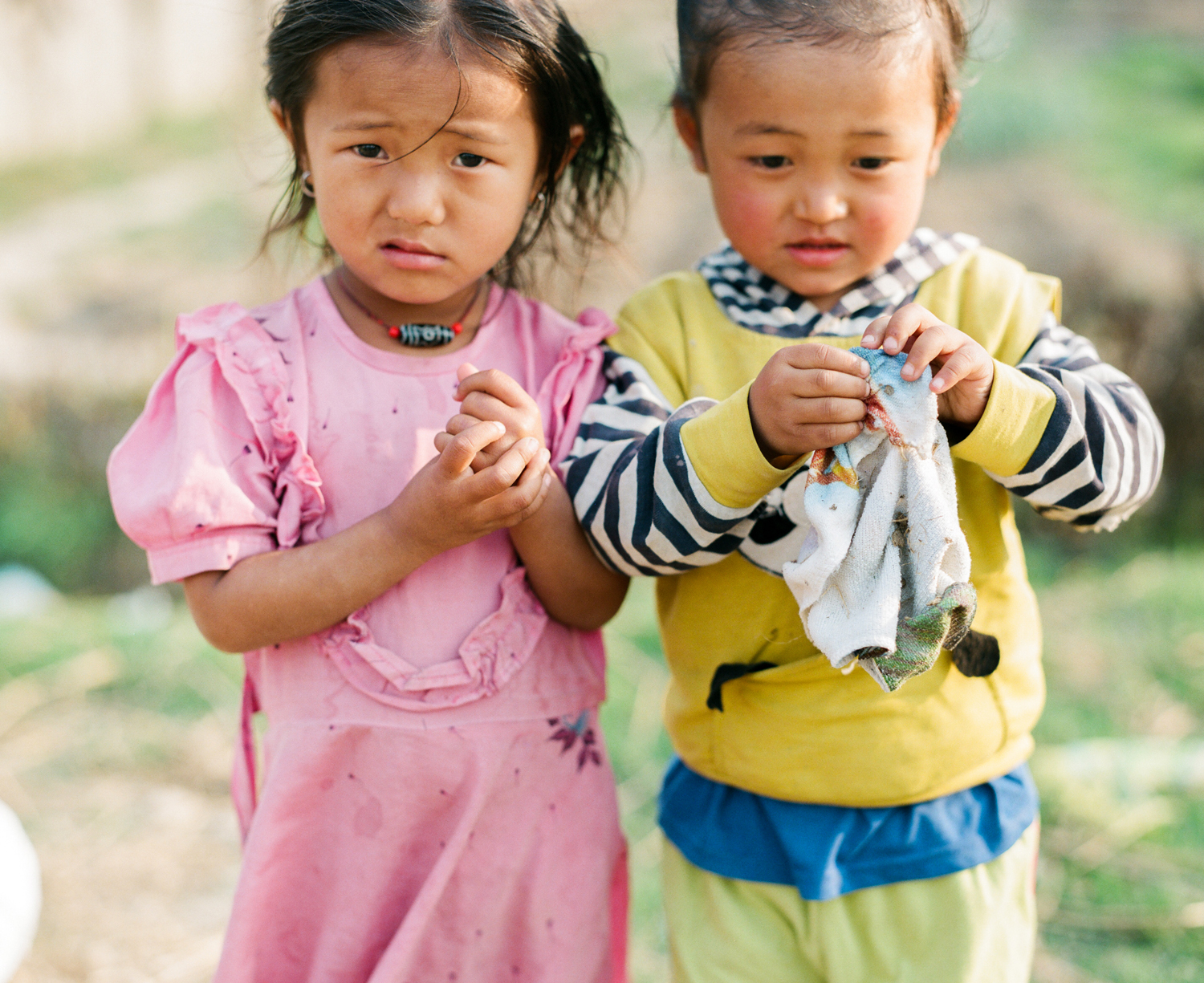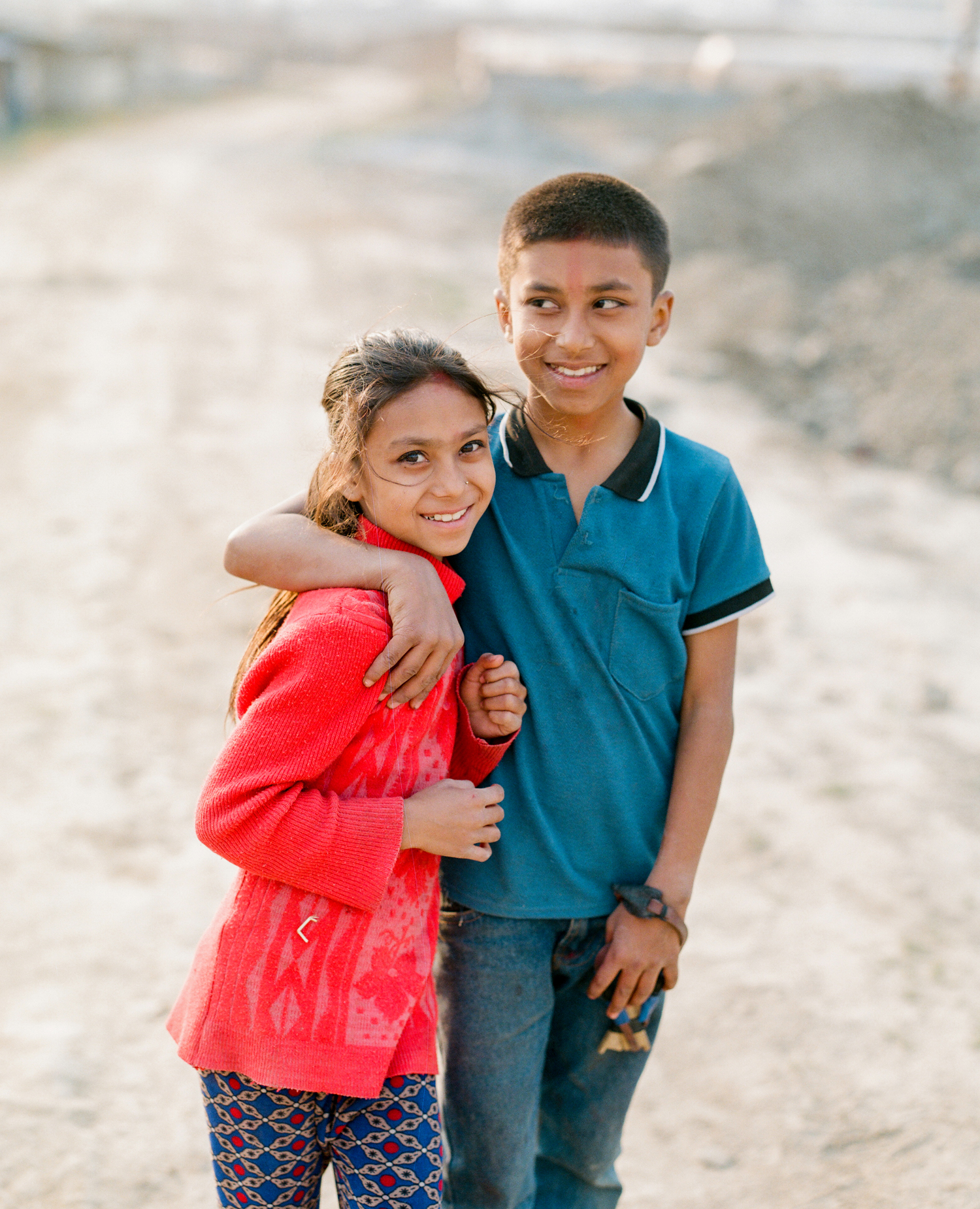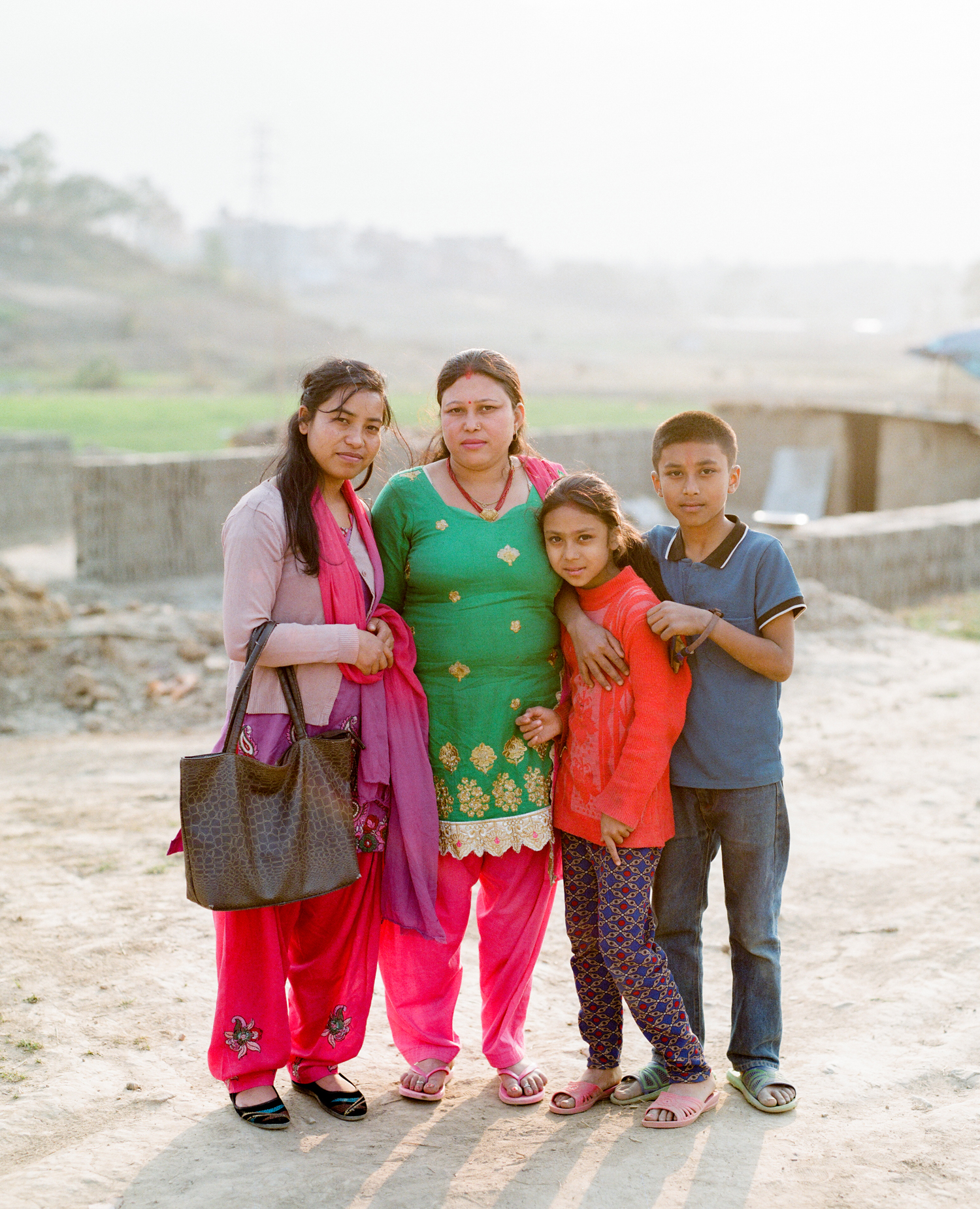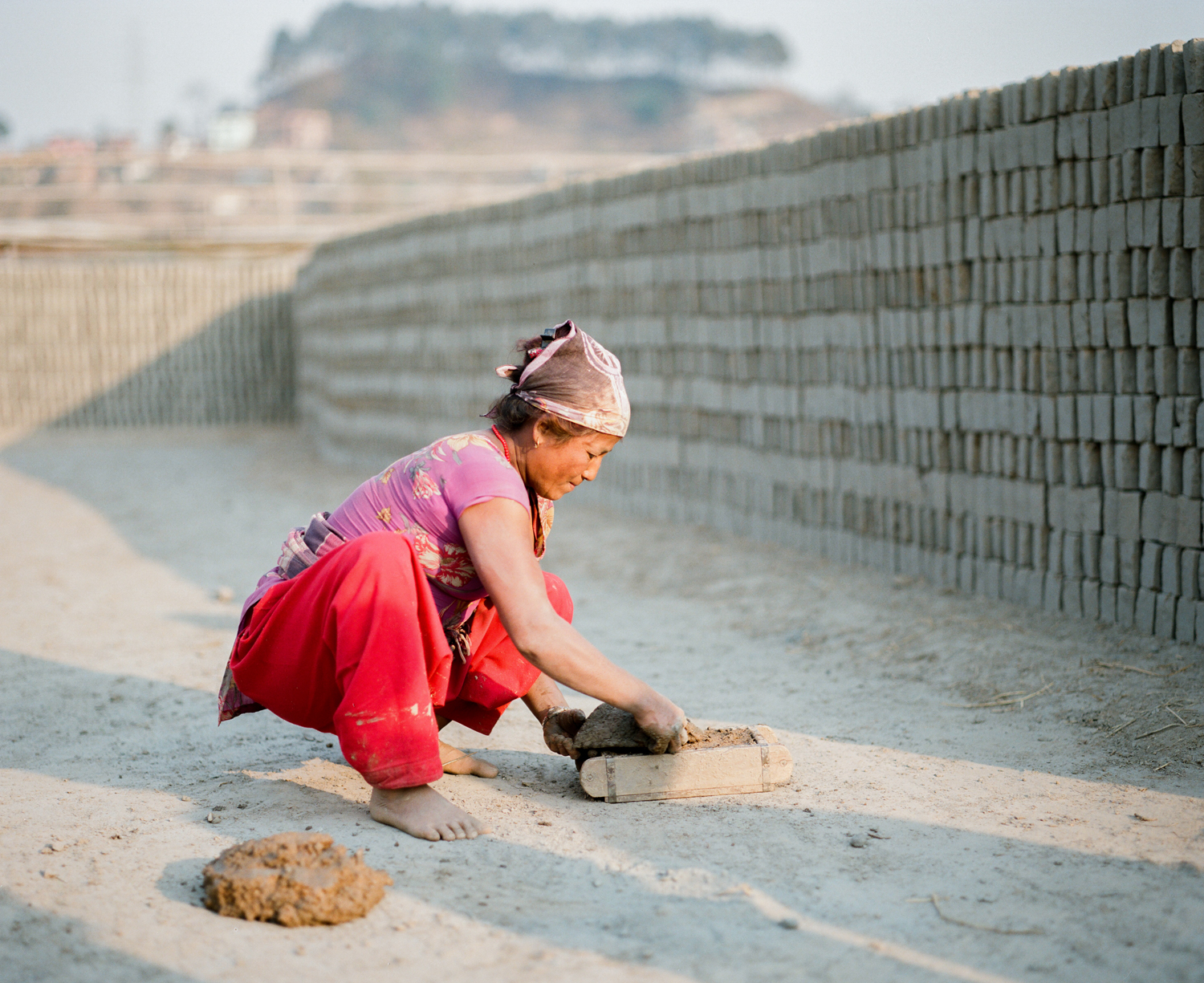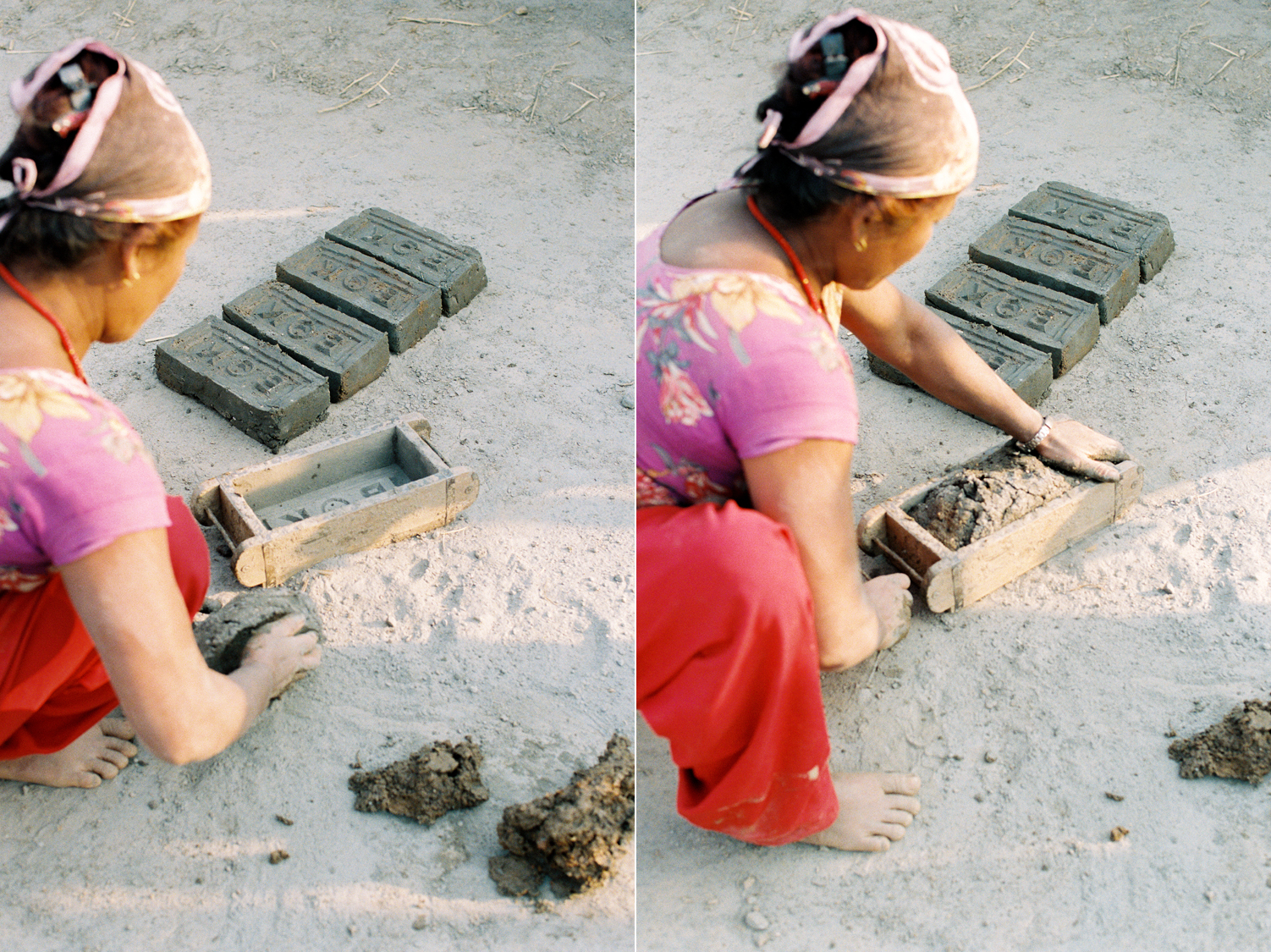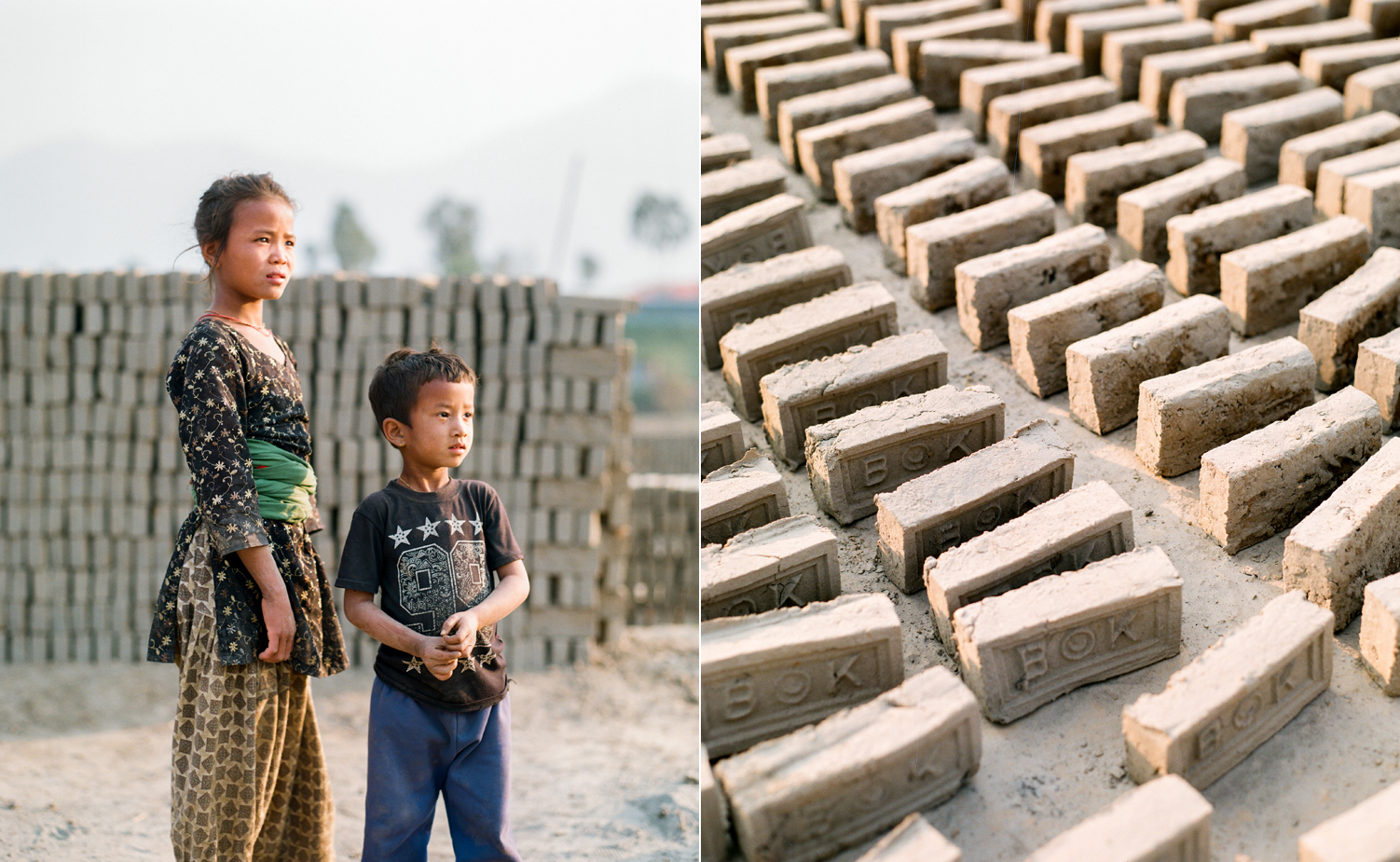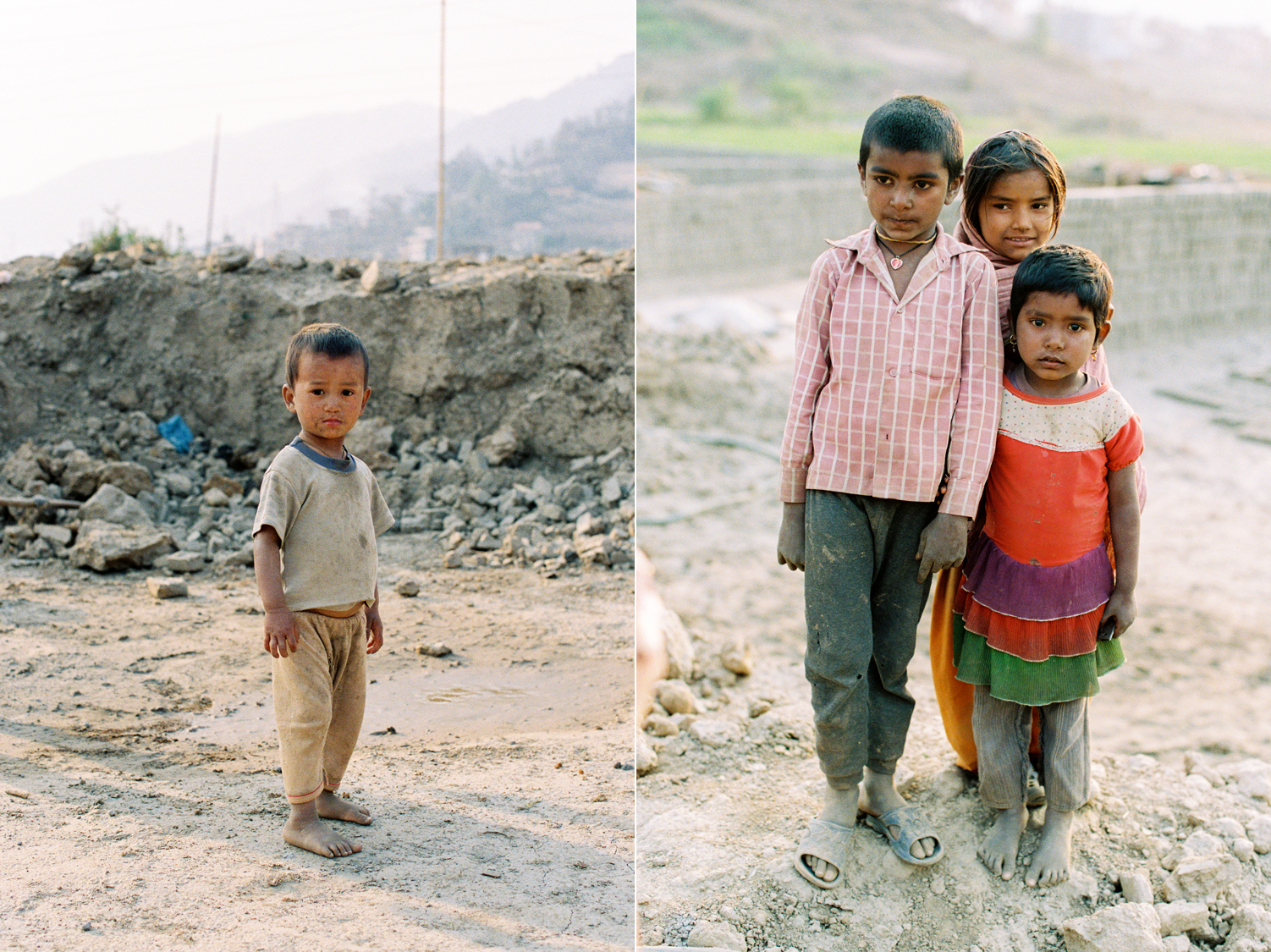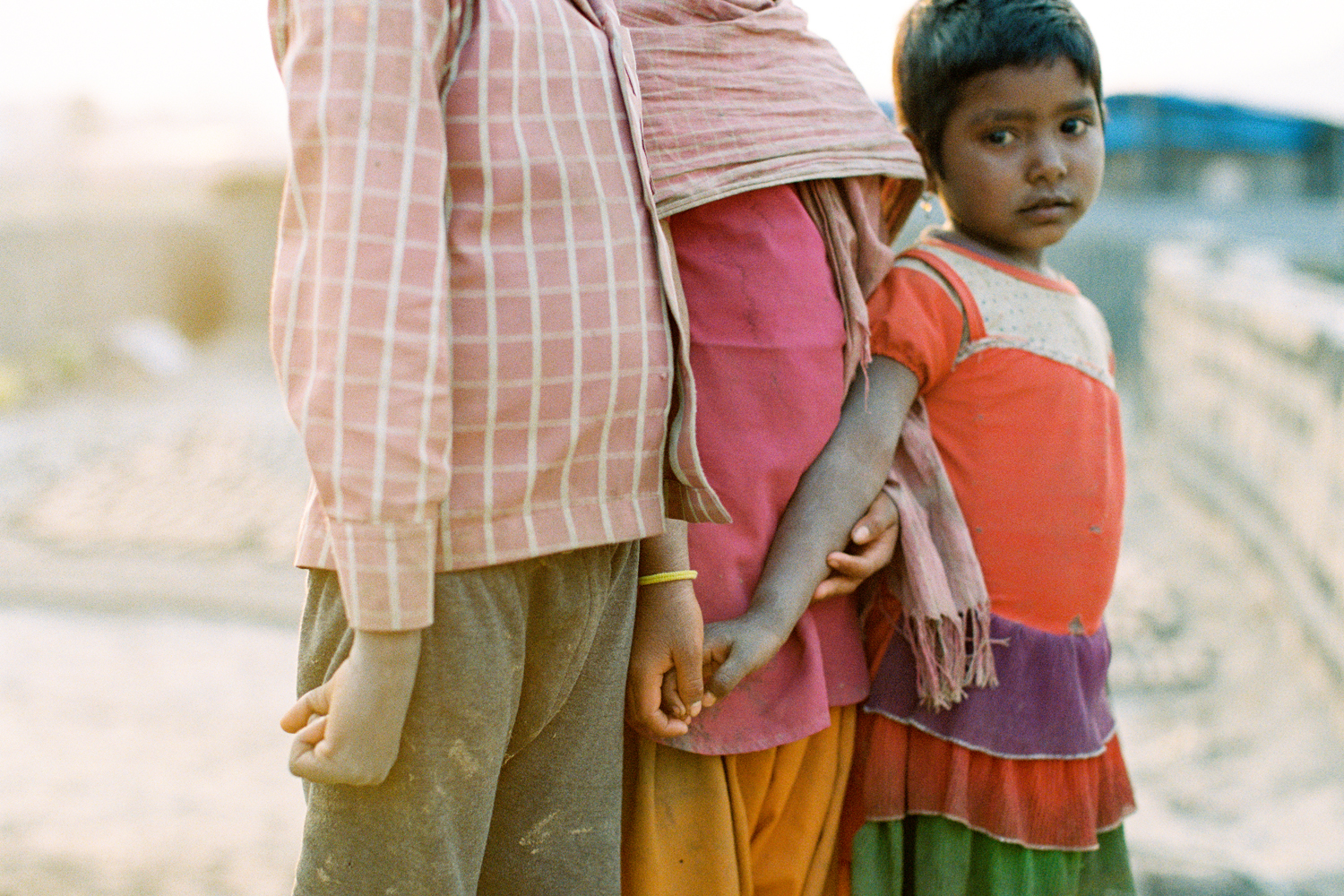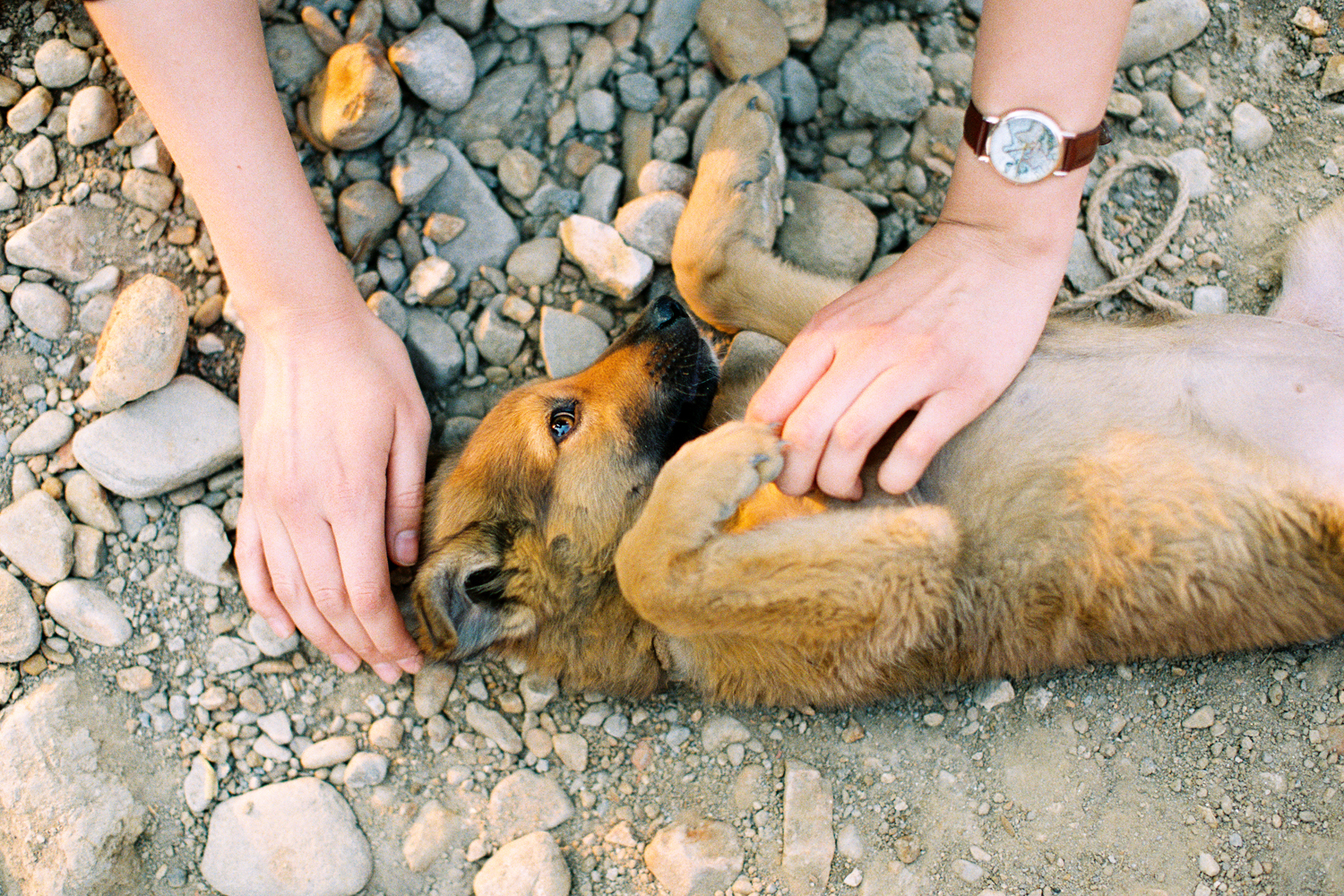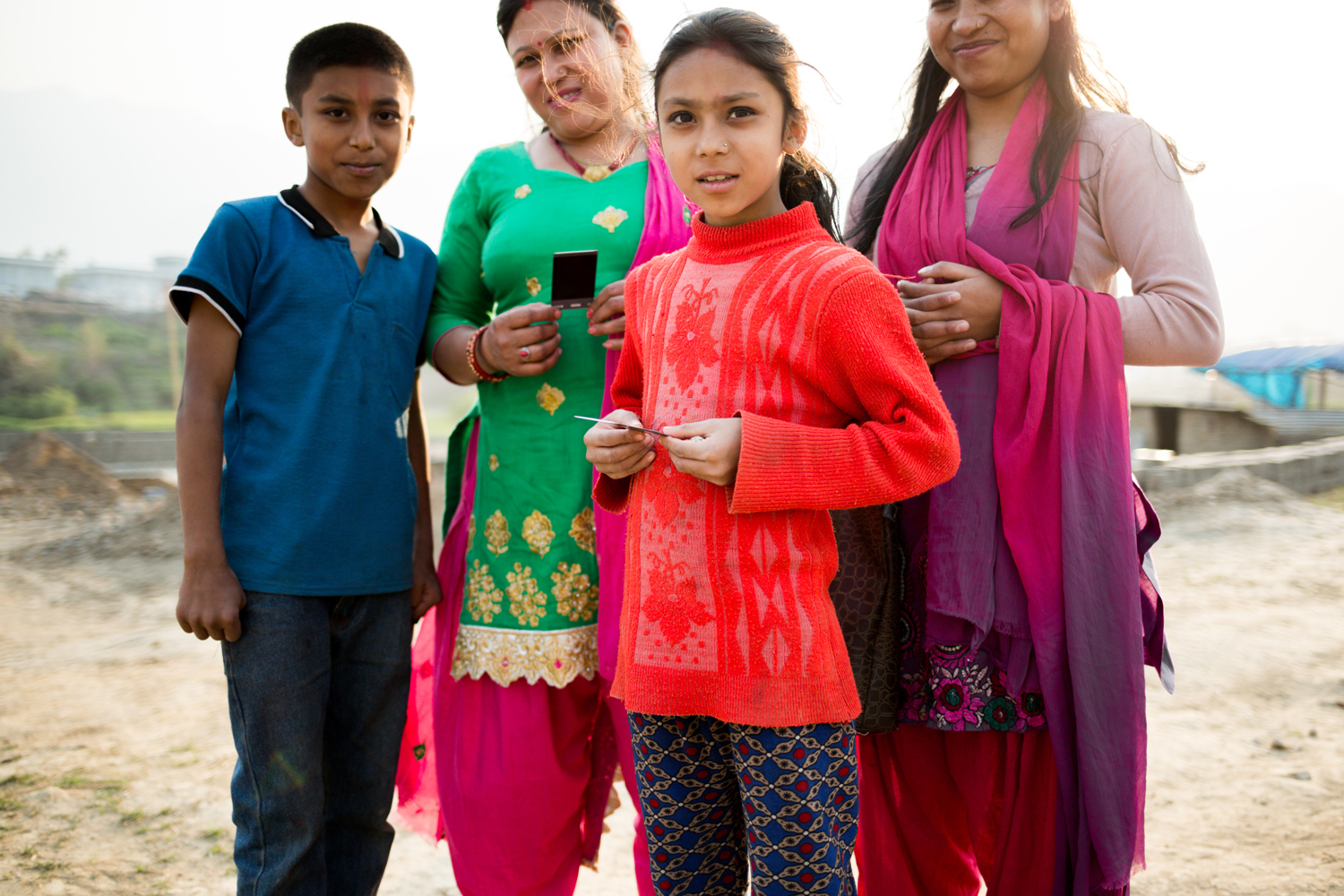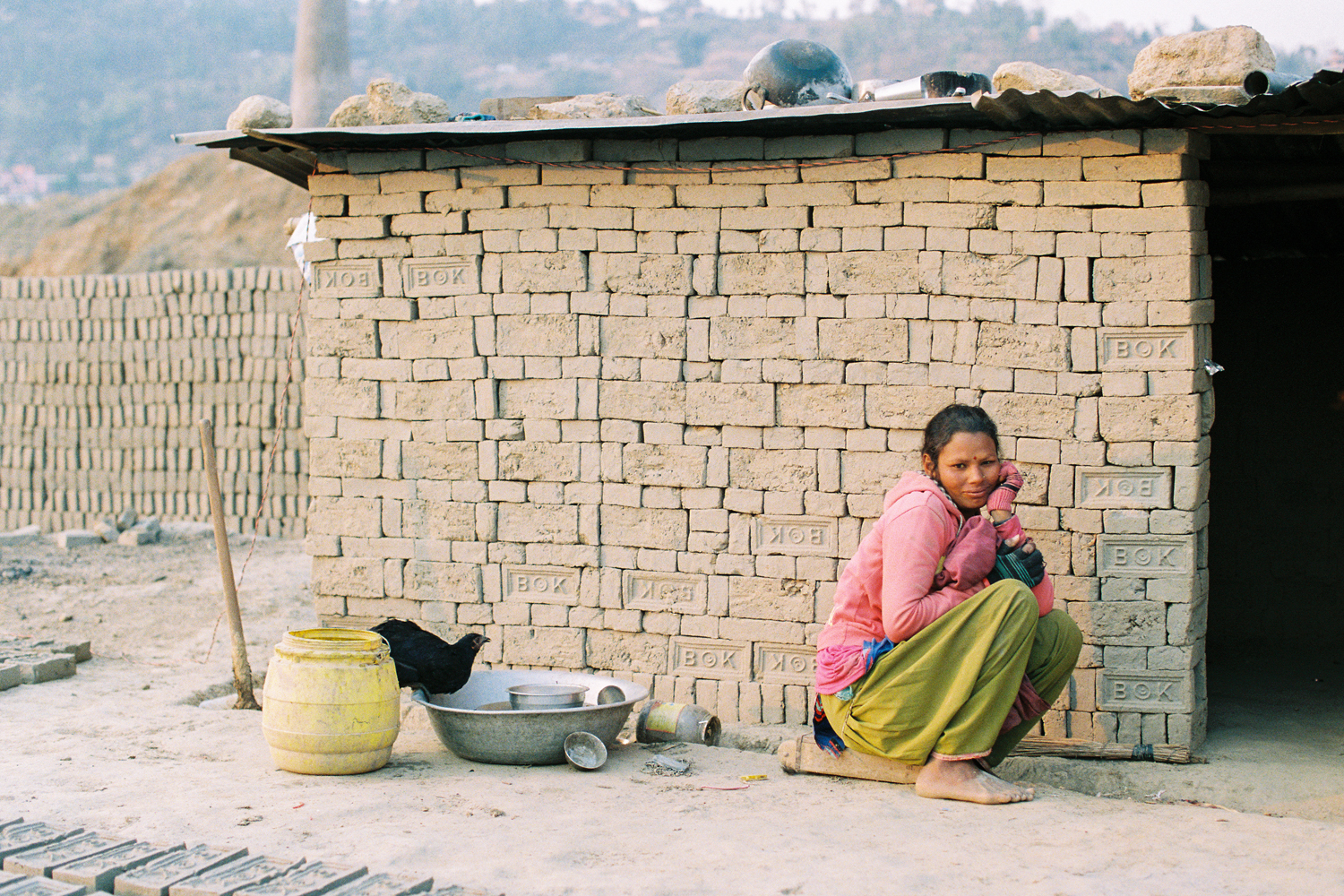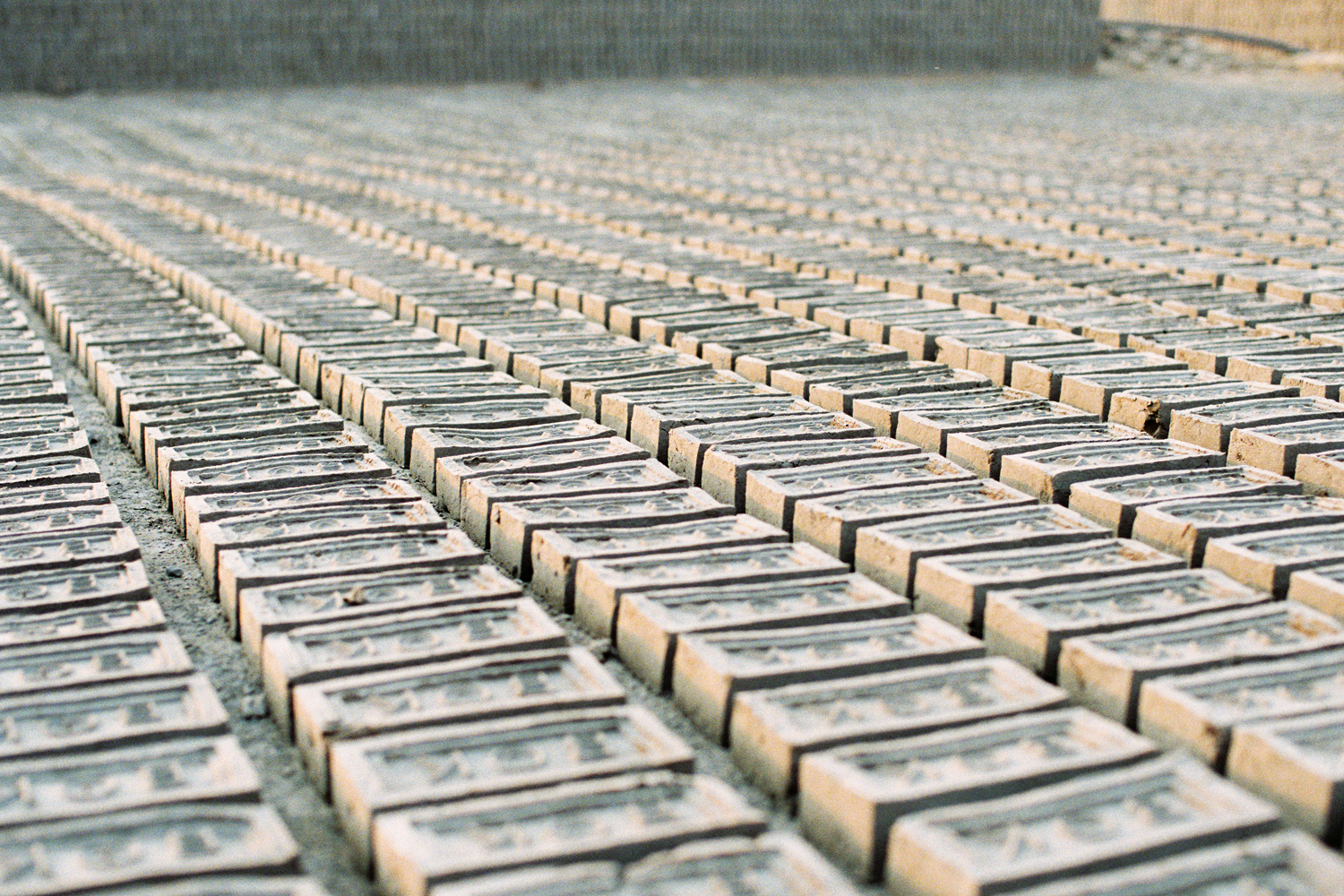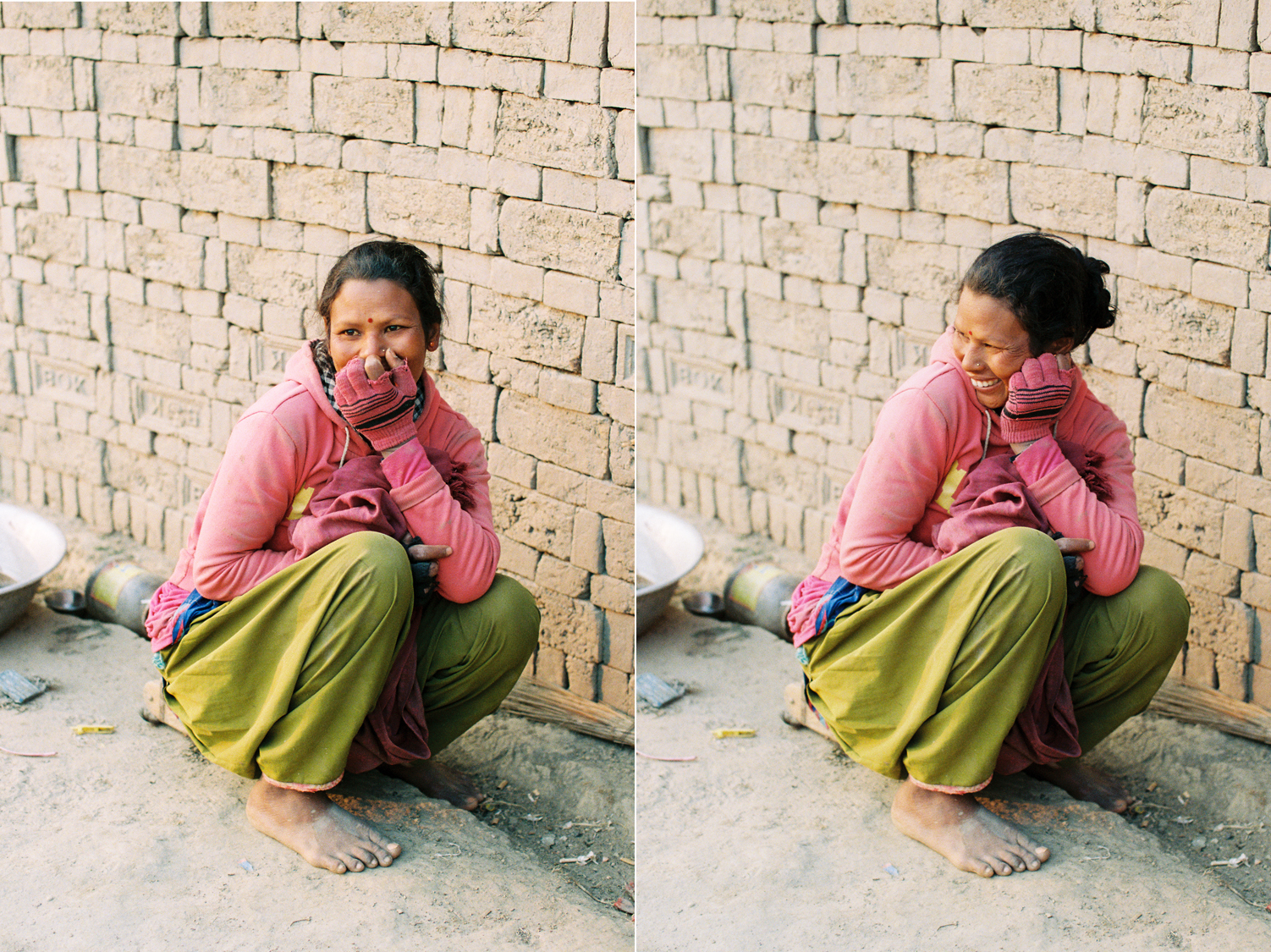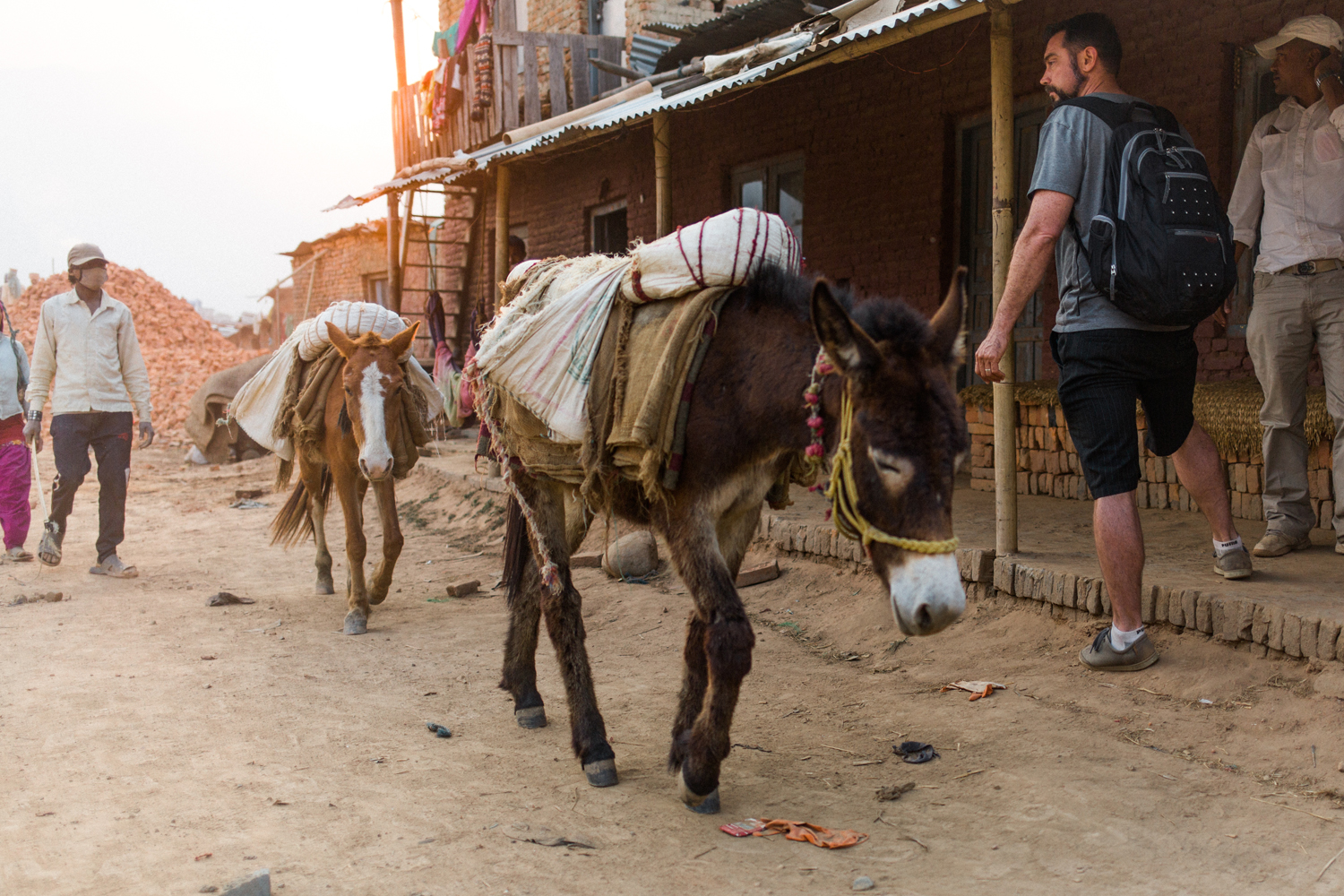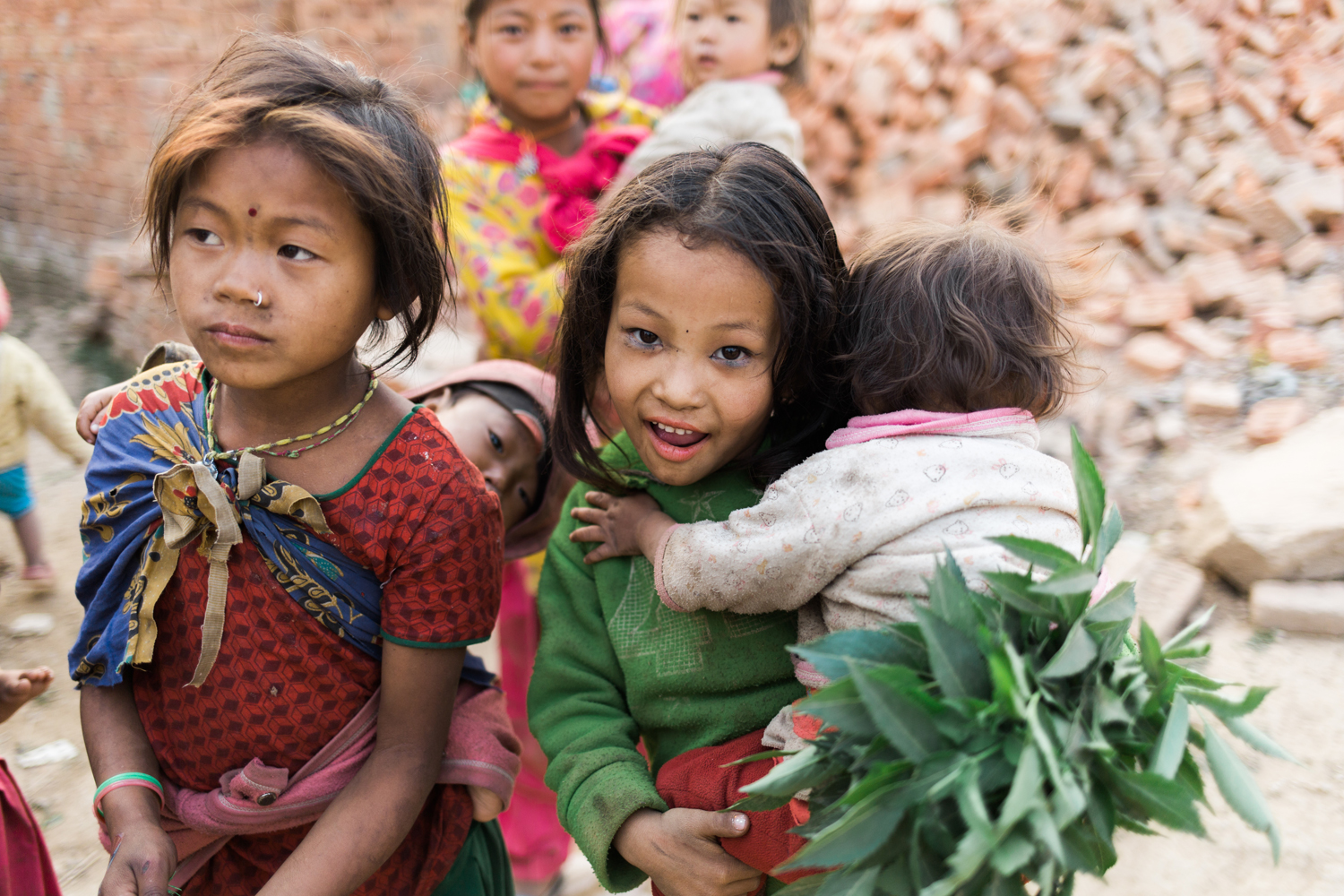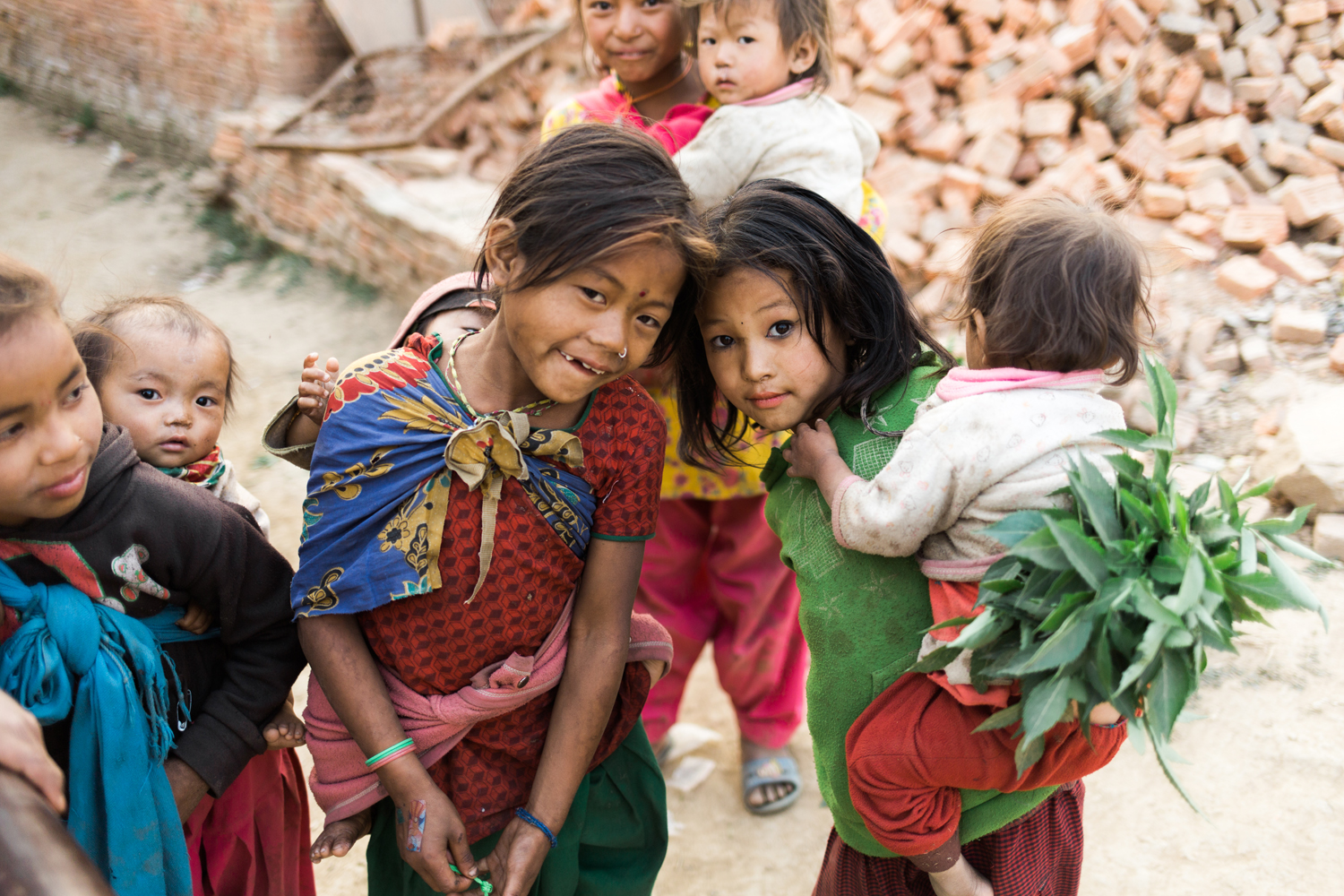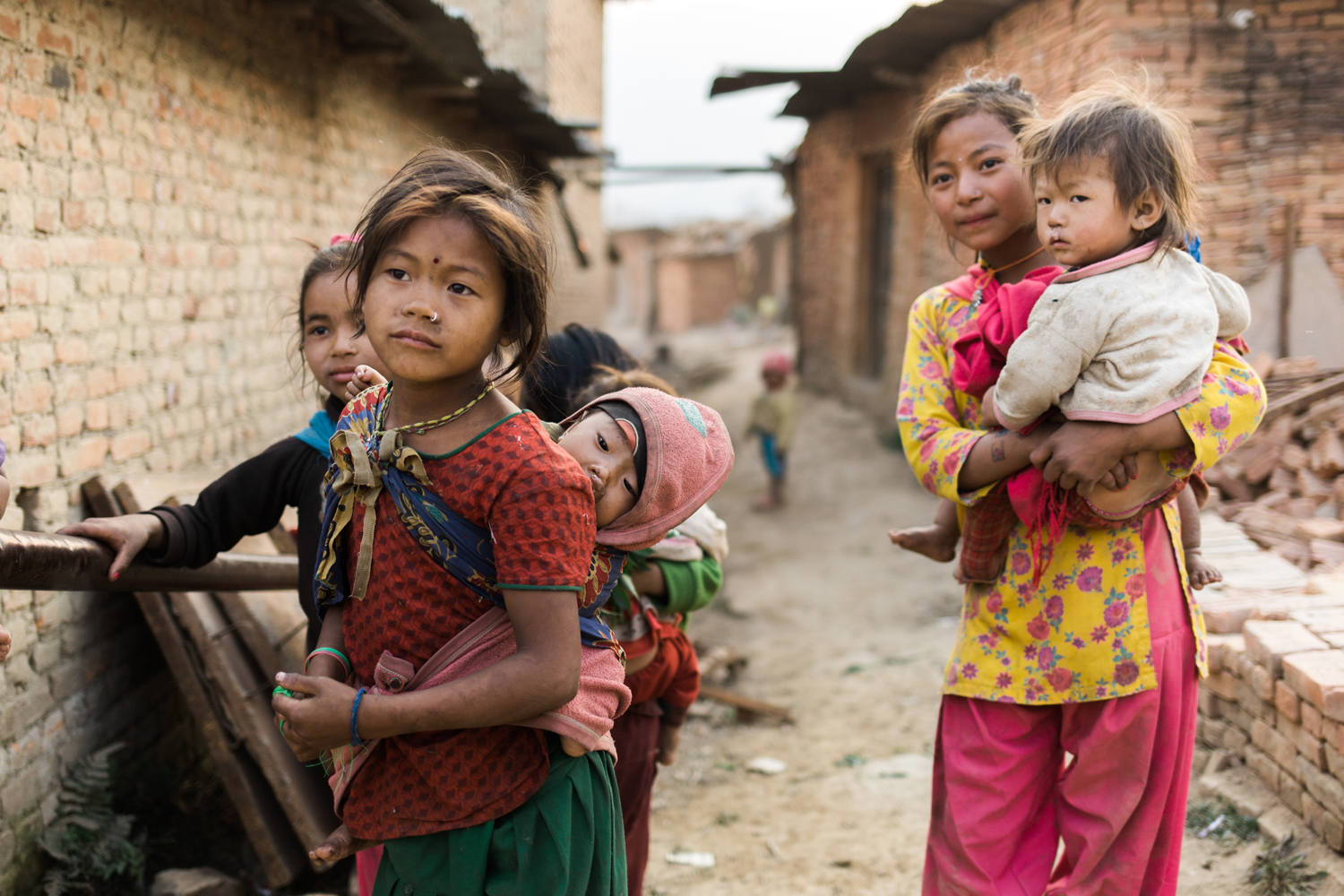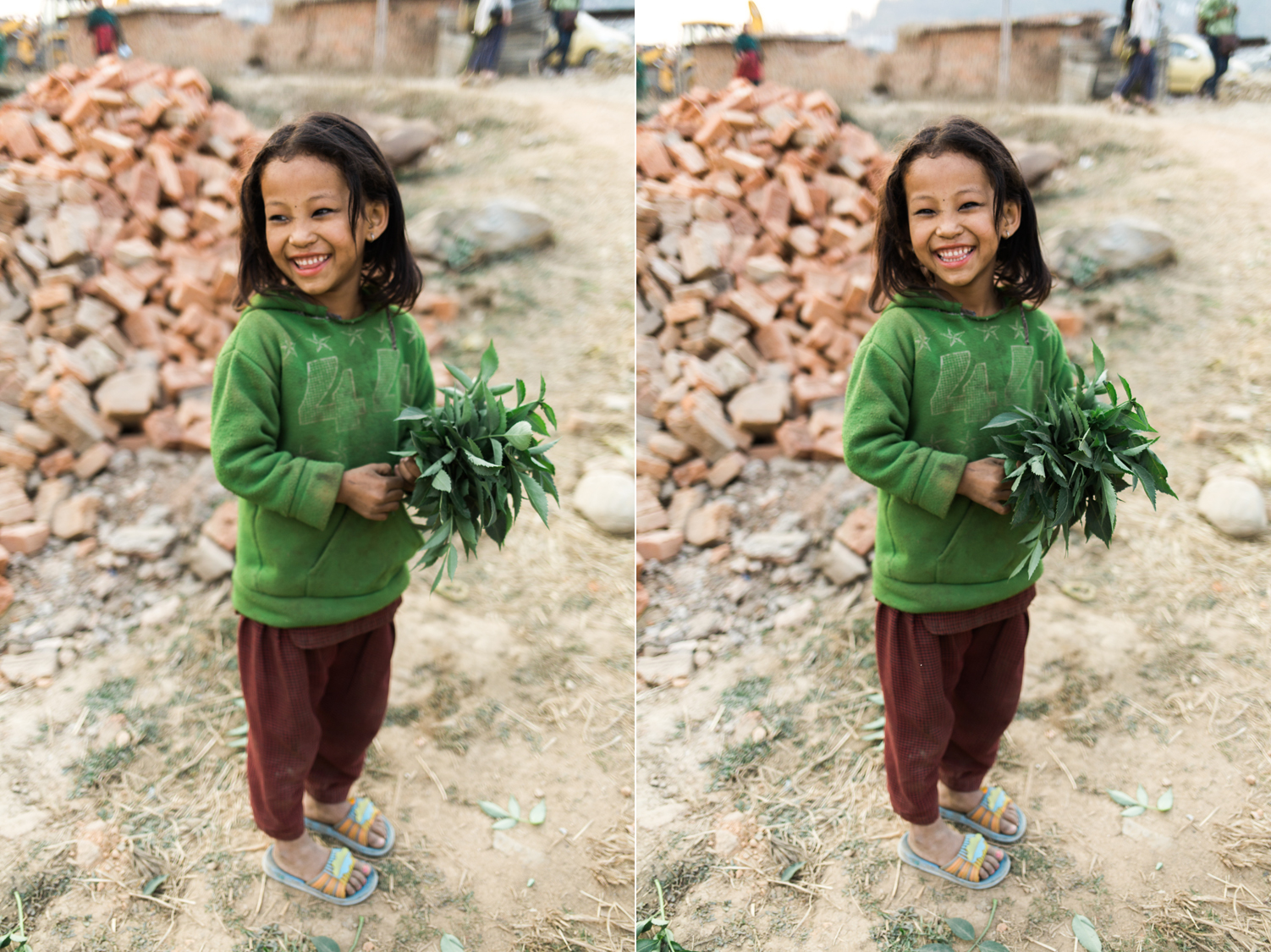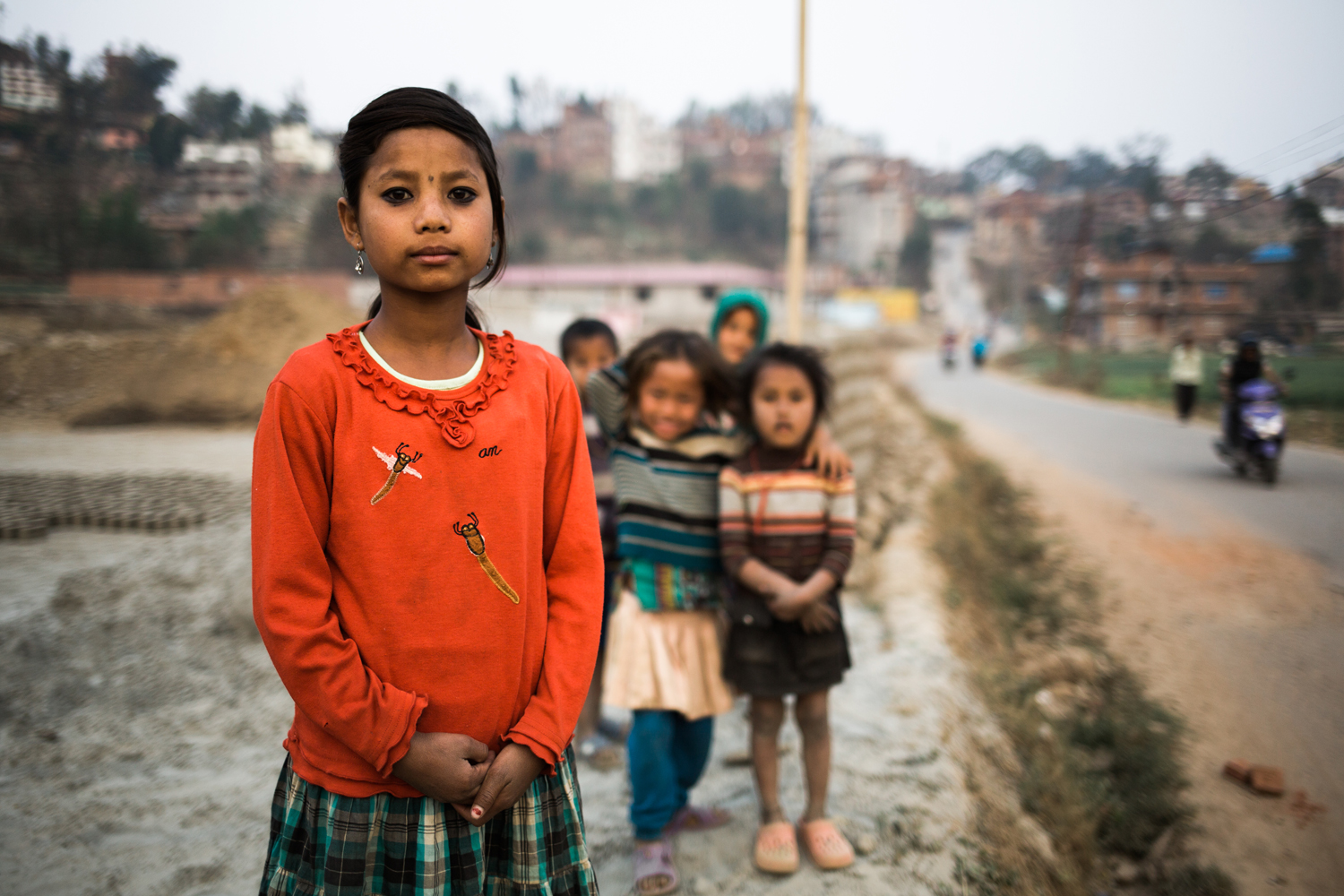On March 8, 2016 I boarded an Emirates flight bound for Dubai, with a transfer set to take me to Kathmandu. Just three months earlier I had discovered The Beyond Workshop, a two week adventure hosted by Nina & Wes Photography, focusing on growing the heart in one's business. A week of our time would be spent in the mountains with gorgeous views of the Himalayas, focusing on business discussions, styled editorial shoots, and quiet one-on-one time. The balance of our time would be spent in Kathmandu, exploring the city and volunteering with important local non-profit organizations. Finding purpose, giving back, and using your business to enrich the lives of others were the keystones of this workshop and when I first read the introductory information about the mission and goals I was ready to pack my bags.
As this marks the one-year anniversary of the day I left for Nepal I wanted to commemorate the day with some of my favorite and most meaningful images from the workshop. But condensing everything into one blog post would be impossible. I took so many photographs that I am proud of during that two weeks that, to me, they are deserving of at least a half dozen posts, each featuring a different story from the workshop. The styled editorial shoots that were curated for us featured incredible vendors and design, and the images we made during our volunteer work were equally as exciting to document. I hope you'll follow along for the rest of the month of March with me as I post about this amazing adventure and how it has changed my life.
Thank you to Nina & Wes Photography, founders of The Beyond Workshop for being such incredible hosts and inspirational guides. Without their love that was so clearly injected into every moment of the workshop, the experience would be no where near the same.
Nepal Part 1: Kathmandu
While these images are the first of many blog posts featuring my photography from Nepal, these are some of the very last images I made before leaving the country. On one of our last nights in Kathmandu, our hosts and local guides that were with us for the whole trip, drove us to the outskirts of town to the labor fields, where we could meet the locals and focus on street photography for the evening. Even though these fields were just in the outskirts of town it took us nearly an hour to get there from our hotel in central Kathmandu. The city is massive and the infrastructure is nil. You make your entire journey on city streets, no highways and hardly any arterial-like roadways are available.
When we arrived we looked out over an expansive valley with a few workers visible in the fields close by. On the road near us there were workers carrying sacks of bricks on their heads and small ponies carrying their own sacks of bricks, walking on their own without halters or handlers in the same direction as the workers. It was only an hour or two before sunset, but it was hot, dry and dusty. Once we left the roadway to come into the fields we met these wonderful ladies, tending to their fields. The sacks they carried were full of weeds they were clearing from their wheat field. While most people we met in Nepal knew some English, these ladies did not but we had a local translator with us that was able to help us greatly.
One of the things we learned very quickly on our journey was that the local people are aware of tourists - especially as we run around with our expensive camera equipment - and their desire to take artsy photos of them, many returning home to sell prints for profit, and ultimately exploiting the hard labor and livelihood of the Nepali people. To me it was clear that these women were apprehensive of a group of Americans approaching them with cameras in their own fields. We offered to take some polaroids of them in exchange for being allowed to photograph them with our other cameras and they agreed.
When I handed one of the ladies her polaroid after waiting for it to develop she started to laugh and cry at the same time. We have no idea how long its been since these women have even seen themselves in a mirror. They are so beautiful and so warm, yet maybe they don't realize it. They took us to see their relative in a house nearby so we could take some photos of her, too. Saying goodbye to these women was hard. They opened up so much once they realized we weren't there to take advantage of them, but rather to learn and observe. The portrait of the two of them side by side, one of them waving, is my favorite image from my trip. It, to me, encapsulates everything that this adventure was about. Meeting incredible people, enriching lives by being kind and giving, and creating some beautiful images.
We met whole families that asked us for photographs once they learned about us and we showed them that we would like to leave them with polaroids. The man in the light blue shirt said that this was his entire family (except for some of the women that were away for the evening), including his father on the far left. He asked for this family portrait to be made specifically in front of his family's wheat fields. Afterwards he showed us his make-shift barn that had pigs inside (and despite the conditions the people in this community live in they were some of the most well-kept pigs I've ever seen). It was incredible to see how much pride the local people have in their families and belongings even though they live on very little.
The girl in the center of this frame approached me on the dirt road as she and her family were walking through the valley. Speaking in very clear English she asked me why I was in Nepal and if I liked being in the country. Most people that we met had a sincere interest in knowing what we thought about their home. We took a selfie together - that these ladies requested - and I watched them continue on their way. They said they were passing through the valley as a route to get home.
In the particular valley we visited, the land is used for rotating purposes as the year progresses. During the summer months it will be used to harvest crops. During the cooler months it is used to make clay bricks. The workers in the valley make each brick individually using a primitive looking brick mold. Some of the photographers in our group were allowed to try their hand at making bricks with the locals - again, they take so much pride in what they do and just wanted to share that with us. Many of the families that live in this valley make these bricks by hand from sunrise to sundown. We saw this woman from a distance and approached, as she seemed to be all alone. There were family groups all over the valley, yet she was with no one - at least when we visited. She stayed crouched this way almost the whole time as we approached, and our friend/guide/translator explained why we were there. She sits here in front of her clay brick home, along side clay bricks that she made drying in the sun. The perfectly laid bricks resting side by side to dry out before being put into an oven were her day's work.
As she explained her work and we asked her some questions, we told our guide that we would love to tell her that we thought she was beautiful. The first photo is while he was translating it back for her, the second photo is her reaction. Another one of my favorite images from this trip. We made her smile so easily, and she is truly such a beautiful woman. The bottom image is after we handed her a polaroid. She was incredible to meet.
We continued wandering this valley, as a lot of the locals started to learn of a friendly group of Americans in the valley and they we eagerly approaching us to show us their homes. It's so amazing to me to have total strangers want to show you their homes. One girl showed us the home that she and her family were building with reclaimed scraps of metal and bricks. She was so happy to be able to show us the construction and effort put into her home.
As the sun was close to setting we headed back towards the vans waiting for us on the road above the fields. We passed by a group of kids, the older ones holding their younger siblings in wraps. We were told that the older kids babysit the younger. My heart broke knowing that these children are born into this environment and their jobs are to care for their younger siblings. They don't get to go to school for an education they deserve to have because they need to help their family. It's an incredibly difficult issue to reconcile. Their lives are hard, but the families stay together and they persevere together. The smiles that we saw indicated to us that these people are happy despite the conditions. Just because their life may be harder than others doesn't mean it's not just as happy as others. Our guides told us that it was important never to feel sorry for Nepali people that we met, because they are okay. Their lives are not as cushy and clean as our own, but that doesn't mean they are sad or left wanting more for their lifestyle. In fact, I'm sure many of the people we met are truly happier than lots of us back here in the US.
I stood in this valley and started to cry. This was one of my last nights in Nepal and I was being given the opportunity to bear witness to some of the hardest working, yet most peaceful and happy, people in the world. They don't complain. They just keep going. I cried because they work so hard for so little and they deserve so much more. I cried because these families work for the equivalent of a couple US dollars per day, at most. I cried because I knew that one week after returning home from this journey to a third world country I would be hopping on another plane to Hawaii for a cushy family vacation where beach front hotel rooms rent for $500 a night. The families that we met would see less than that in a given year. It's painful to know how different life is for some just because they were born living in one country rather than another.
This evening was easily the most impactful portion of our trip because it showed me that you don't have to have a lot to be happy, and the way you perceive your environment is not the same way that others would. Don't feel sorry for people just because you have something different or "better", but rather focus on making friends, learning and growing. We all have to share this planet together. Meeting these people made me a better person.
I'll continue to share images and stories from my trip to Nepal over the next couple weeks, and I hope you will stay tuned for more. I sincerely hope to return to his country some day. It was an incredible journey to say the least.
Thank you so much to the incredible vendors and support team for making The Beyond Workshop so incredible and life changing. Stay tuned for more!

